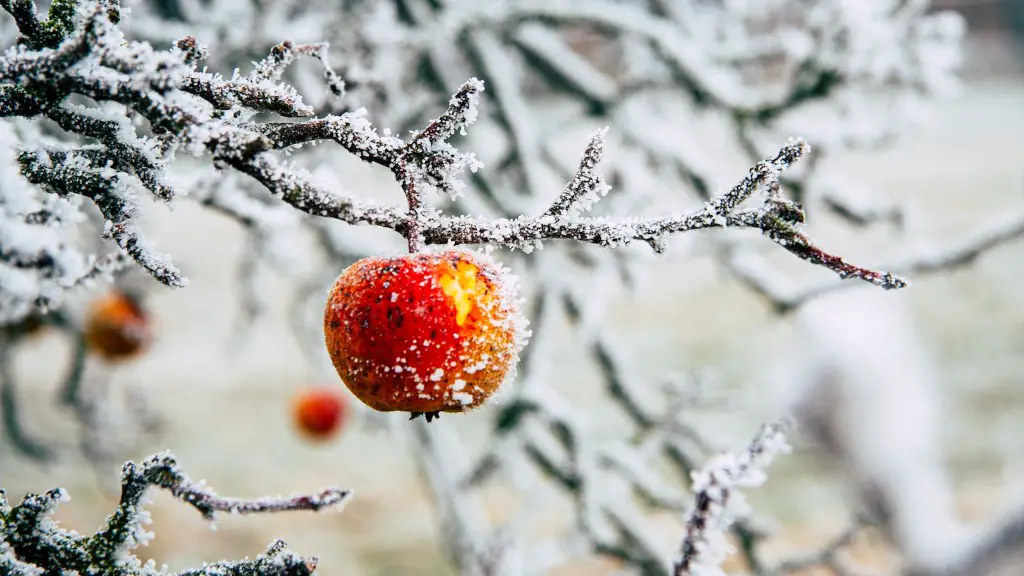Growing a lemon tree in a pot is a great way to add a tropical feel to your garden. It can also provide fruit for over a decade, with some trees living up to twenty years. To get the most out of your lemon tree, it’s important to follow a few steps. Here’s how to do it:
1. Select a pot. Choose one that’s at least 18” wide and 20” deep, and made of a material like terra cotta or ceramic. Make sure the container has a good drainage system.
2. Prepare the soil. Buy a potting soil that is specifically formulated for citrus trees. This type of soil has plenty of organic matter, pH stabilisers, and will help keep the plants hydrated.
3. Plant your lemon tree. Carefully remove the tree from its container, and loosen the roots a bit before you place it in the pot. Fill the container with soil, making sure to leave a few inches at the top for proper drainage. Water the tree thoroughly, until the soil is moist but not soggy.
4. Fertilise. Feed your tree every two weeks with a citrus-specific fertiliser. This will provide it with the necessary nutrients it needs to grow and produce fruit.
5. Prune. Prune the tree regularly, particularly in the summertime, to keep it healthy and encourage new growth. Make sure to remove any dead or diseased limbs, as well as any suckers (shoots) that grow below the soil line.
6. Monitor water. During the hot summer months, your lemon tree will require more water. Make sure to monitor the soil’s moisture level, and water if it feels dry to the touch.
7. Protect from frost. If you live in an area with cold winters, it’s important to protect your lemon tree from frost. Consider placing a tarp or plastic bag over the tree, or moving the container into a sheltered area.
Caring For A Lemon Tree In A Pot
In addition to the steps mentioned above, it’s important to take certain measures to care for your lemon tree. Firstly, make sure to avoid over-watering the tree, which can cause root rot. Secondly, make sure to give your tree plenty of sunshine. Place the pot in an area of your garden that receives direct sunlight for at least 6-8 hours each day. It’s also important to provide adequate ventilation, as this will help to prevent fungal problems.
Finally, keep an eye out for pests like aphids and mealybugs, which can easily infest a lemon tree. If you spot any of these critters, take action quickly by using a natural insecticidal soap. If pests become a persistent problem, you may need to use an organic or chemical insecticide to keep them at bay.
Harvesting Your Lemon Tree
Depending on the variety, lemons can be ready to harvest anywhere from 6-9 months after planting. To check whether your lemons are ready to be picked, look for yellow skin or a few green stripes, which indicate ripeness. It’s best to harvest the lemons when they’re at least half-ripe, as this will give them more flavour. Once picked, the lemons can be stored in the refrigerator up to three weeks.
When harvesting, make sure to use clean, sharp fruit-picking shears or a knife. This will minimize the risk of spreading any diseases or pests to the tree. Additionally, cutting the fruit from the stem, rather than pulling it off, will reduce damage to the tree’s branches.
Disease Prevention
To prevent diseases from damaging your lemon tree, make sure to inspect the leaves and branches regularly. Diseases like citrus canker, citrus greening disease, and citrus leprosis can cause spots, discoloration, and thinning of the foliage. If any of these signs are present, it’s best to remove all affected leaves and branches right away. To keep diseases and pests under control, consider spraying the tree with an appropriate fungicide every few weeks.
It’s also important to ensure that the tree is getting sufficient calcium and magnesium. Both of these nutrients can be obtained from a proper fertilizer program. Additionally, strive to keep the pH level of the soil in the 6.0-7.0 range, as this will help to keep the tree healthy and prevent diseases. Finally, be sure to provide your tree with the necessary nutrients and regular watering to keep it in top condition.
Pruning Your Lemon Tree
Regular pruning will help to keep your lemon tree healthy and encourage new growth. It’s important to start pruning as soon as the tree is 2-3 months old. Make sure to remove any damaged or dead limbs, suckers, or dry leaves. In addition, it may be necessary to thin out the crown or remove any branches or leaves that are blocking light from reaching the interior of the tree.
When pruning, make sure to use the three-cuts method. Start by cutting the branch back to just above the crotch (where it meets another limb). This will produce a stub that can attract bacteria, so it’s important to cut this off as well. Finally, cut the branch just outside of the branch collar, which is the raised area at the base of the limb where it meets the trunk. This will help to ensure that the wound seals properly and prevents any infections.
Dealing With Citrus Bark Girdling
Citrus bark girdling, or trunk girdling, is a common problem in trees that are grown in pots. This is when a single line or chain of growth wraps around the base of the trunk, or the upper part of the lower trunk. If left unaddressed, bark girdling can severely harm your lemon tree and even cause it to die. To prevent girdling, monitor the tree’s growth and gently remove any encircling roots or branches as needed.
Another way to prevent bark girdling is to keep the soil level consistent. When planting the tree, ensure that the soil level is flush with the surrounding soil in your garden. Additionally, it’s important to maintain constant soil moisture, as this can help to reduce the likelihood of girdling. If you start to see signs of bark girdling, take action right away by carefully removing the damaged bark and encircling roots.
Choosing A Fertilizer For Your Lemon Tree In A Pot
The key to having a healthy lemon tree is providing it with proper nutrition. When selecting a fertilizer, make sure to choose one that’s specifically formulated for citrus plants. These types of fertilizers are high in nitrogen, phosphorus, and potassium and can help to keep the tree healthy. Additionally, look for a fertilizer that includes micronutrients such as iron, zinc, and magnesium.
When using a liquid fertilizer, make sure to water it into the soil around the tree’s root system. Additionally, it’s important to avoid over-fertilizing by following the manufacturer’s instructions closely. Too much fertilizer can cause damage to the tree’s roots and burn the leaves, so it’s important to monitor the amount you use. If you’re unsure, consult with your local nursery or agricultural extension office for additional information and advice.



